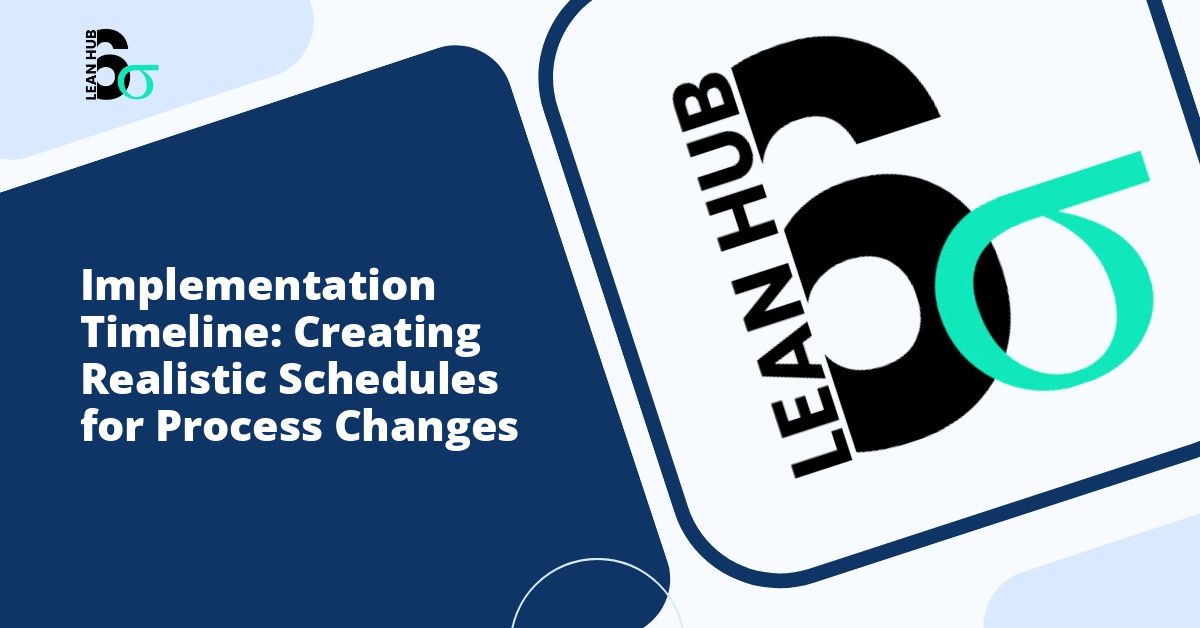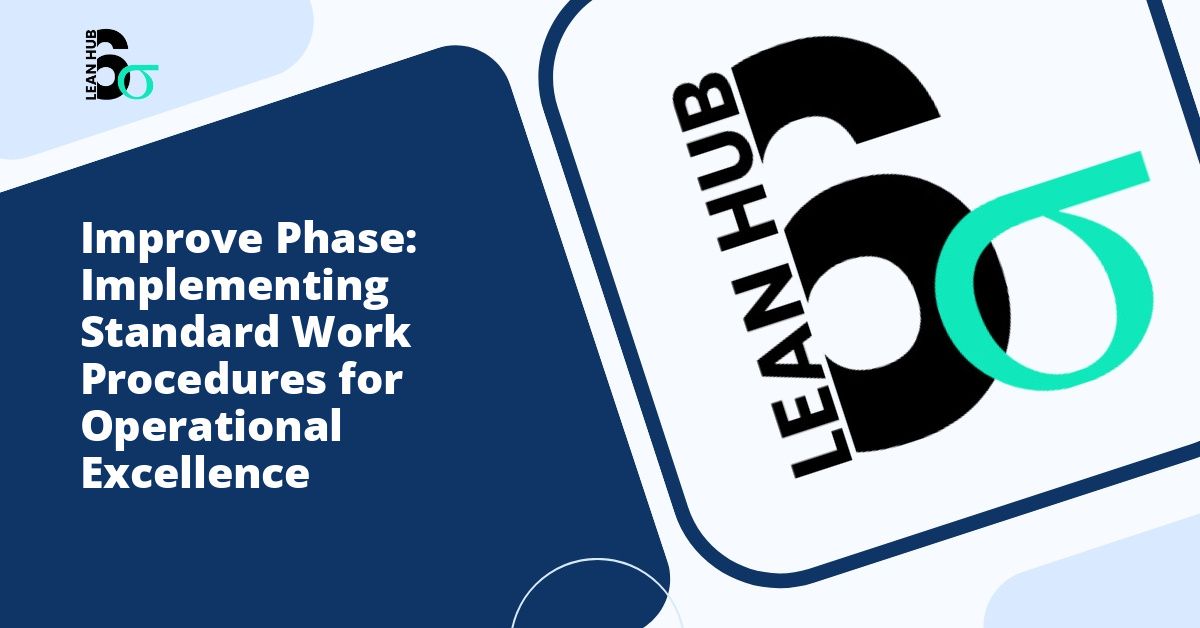In today’s fast-paced business environment, organizations continuously seek ways to improve their processes and operations. However, the success of any process improvement initiative heavily depends on creating a realistic implementation timeline. Without proper scheduling, even the most well-planned changes can fail, leading to wasted resources and diminished team morale. This comprehensive guide will help you develop effective timelines for implementing process changes in your organization.
Understanding the Importance of Realistic Implementation Timelines
Process changes rarely happen overnight. Whether you are implementing a new software system, restructuring workflows, or adopting lean six sigma methodologies, having a realistic timeline is crucial for success. An implementation timeline serves as a roadmap that guides your team through each phase of the change process, ensuring that all stakeholders remain aligned and informed throughout the journey. You might also enjoy reading about Visual Management in Improve Phase: Making Process Performance Visible for Lasting Results.
Organizations that rush implementation often encounter significant obstacles, including employee resistance, technical difficulties, and incomplete testing. Conversely, timelines that are too extended may lose momentum and executive support. The key lies in finding the right balance between urgency and feasibility. You might also enjoy reading about Solution Selection Matrix: How to Choose the Best Improvement from Multiple Options.
Key Components of an Effective Implementation Timeline
Assessment and Planning Phase
Before making any changes, you must thoroughly assess your current state and define your desired future state. This initial phase typically consumes 15 to 25 percent of your total project timeline. During this period, you should document existing processes, identify pain points, and establish clear objectives for the change initiative. You might also enjoy reading about Poka-Yoke in Six Sigma: Error-Proofing Your Process Improvements for Quality Excellence.
This phase also includes resource allocation, budget determination, and stakeholder identification. Take time to understand who will be affected by the changes and how they currently perform their work. This groundwork will prove invaluable when you move into active implementation.
The Recognize Phase in Process Improvement
The recognize phase represents a critical early stage where organizations identify opportunities for improvement and acknowledge the need for change. During this phase, leadership and team members must recognize inefficiencies, bottlenecks, or areas where current processes fail to meet organizational goals.
In the context of lean six sigma, the recognize phase aligns closely with the Define stage of the DMAIC methodology. Here, you recognize the problem statement, project scope, and business case for change. Taking adequate time during the recognize phase prevents scope creep and ensures that your implementation timeline addresses the right issues.
Allocate at least two to four weeks for the recognize phase, depending on process complexity and organizational size. This investment pays dividends by ensuring everyone understands why changes are necessary and what success looks like.
Breaking Down Your Timeline into Manageable Milestones
Large-scale process changes can feel overwhelming to teams. Breaking your timeline into smaller, achievable milestones helps maintain momentum and allows for regular progress assessment. Each milestone should represent a tangible deliverable or accomplishment that moves the project forward.
Short-Term Milestones (Weeks 1 to 8)
Early milestones focus on foundation-building activities. These typically include:
- Completing stakeholder interviews and process mapping
- Finalizing project charter and success metrics
- Assembling the implementation team
- Conducting initial training sessions
- Developing communication plans
Mid-Term Milestones (Months 3 to 6)
As you move into active implementation, your milestones become more specific to the changes themselves:
- Piloting new processes with a small group
- Gathering and analyzing pilot feedback
- Making necessary adjustments based on real-world testing
- Developing comprehensive training materials
- Creating support systems and documentation
Long-Term Milestones (Months 6 to 12)
Later milestones focus on full deployment and sustainability:
- Rolling out changes across all departments or locations
- Monitoring performance against established metrics
- Addressing challenges and making refinements
- Conducting post-implementation reviews
- Transitioning to ongoing management and continuous improvement
Factors That Influence Timeline Development
Organizational Complexity
The size and structure of your organization significantly impact implementation timelines. A small company with 50 employees can typically implement changes faster than a multinational corporation with thousands of employees across multiple locations. Consider geographic distribution, reporting structures, and the number of affected departments when estimating timeframes.
Change Magnitude
Minor process adjustments might require only a few weeks, while complete operational overhauls could take a year or more. Be honest about the scope of your changes. Implementing lean six sigma across an entire organization, for example, represents a substantial cultural shift that requires adequate time for training, practice, and adoption.
Resource Availability
Your timeline must reflect the actual availability of key resources, including personnel, budget, and technology. Team members typically cannot dedicate 100 percent of their time to implementation while maintaining regular responsibilities. Factor in realistic time commitments when building your schedule.
Technical Requirements
Process changes involving technology often face unexpected delays due to integration challenges, customization needs, or vendor dependencies. Build buffer time into your timeline for technical troubleshooting and testing.
Building Flexibility into Your Timeline
Even the most carefully planned timelines encounter obstacles. Building flexibility into your schedule helps you navigate unexpected challenges without derailing the entire project. Consider these strategies:
Buffer Time: Add contingency periods of 10 to 20 percent to your major milestones. This buffer absorbs minor delays without affecting downstream activities.
Regular Review Points: Schedule monthly or quarterly timeline reviews to assess progress and make adjustments. These checkpoints allow you to recalibrate expectations based on actual performance.
Parallel Paths: Where possible, design your timeline so certain activities can proceed simultaneously rather than sequentially. This approach accelerates implementation while providing alternative routes if one path encounters obstacles.
Communication Throughout the Implementation Timeline
Effective communication is essential at every stage of your timeline. Stakeholders need regular updates about progress, challenges, and upcoming changes. Develop a communication cadence that matches your timeline structure:
- Weekly updates during active implementation phases
- Monthly progress reports to leadership
- Milestone celebrations to maintain enthusiasm
- Open forums for questions and concerns
Transparent communication about timeline adjustments builds trust and maintains support, even when changes take longer than initially anticipated.
Measuring Progress Against Your Timeline
Tracking progress requires both quantitative metrics and qualitative assessments. Use project management tools to monitor task completion and milestone achievement. However, also gather feedback from team members about adoption rates, confidence levels, and emerging challenges.
Key performance indicators should align with your timeline phases. Early metrics might focus on training completion and pilot participation, while later metrics emphasize process efficiency, error rates, and employee satisfaction.
Learning from Timeline Variances
When actual implementation differs from your timeline, treat these variances as learning opportunities. Document what caused delays or accelerated certain phases. This information proves invaluable for future process improvement initiatives and helps your organization develop more accurate planning capabilities over time.
Conclusion
Creating realistic implementation timelines for process changes requires careful consideration of numerous factors, from organizational complexity to resource availability. By investing adequate time in the recognize phase, breaking your timeline into manageable milestones, and building in flexibility, you position your organization for successful change implementation.
Remember that the goal is not merely to complete changes quickly but to implement them effectively in a way that ensures lasting adoption and delivers sustainable results. A well-crafted timeline balances urgency with realism, providing your team with clear direction while allowing space for learning and adaptation along the way.








